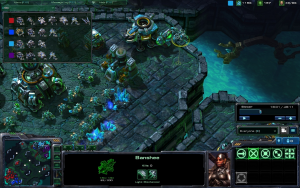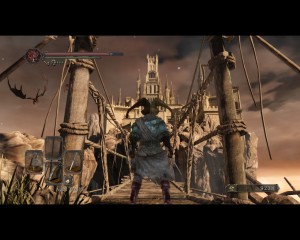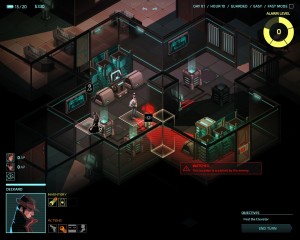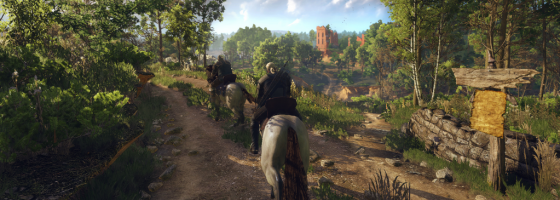A popular set of terms used for strategy or long titles are “early game, mid game and late game.” But we can take this further by breaking down a game’s design into these three categories. For understanding proper pacing and growth, it’s vital to have these concepts down.
The Early Game:
Early Game refers to the player just starting their time in a title and the immediate things that they’re going to do or learn in the game. When we talk about a game making a good first impression, the Early Game is all about that. If the player has a poor experience in the Early Game, there’s little chance that they’ll keep playing; no matter how great the mid or Late Game are.

The early game in a strategy title is about figuring out your plan while unlocking content to use in the mid game
Obviously for new players starting out, the Early Game should have tutorials, tool-tips and/or starting scenarios designed to ease someone new into the game.
In some titles, the designers may lock or restrict complex mechanics to prevent someone new from stumbling on them and getting confused. Another option is to have those advance mechanics act as a gating tool for the mid-game; providing the player with a goal to go over and a reward for doing so.
Moving on, the Mid Game is usually the most exciting part of the game and one that is hard to screw up.
The Mid Game:
Mid Game is when the player will graduate to playing the game at its fullest; all the mechanics and systems should be unlocked and the player will be making use of them. This is the most exciting part of a game, as the player is skilled enough to understand how the game works and has all the options open to them to play.

Mid Game play comes in once the player understands all the mechanics of the game, and can play the game unfiltered
This is the part of your game that hinges on a successful Early Game; you don’t want someone getting frustrated or bored and never reaching your Mid Game.
In fact, a game where most people don’t reach the Mid Game is a sure sign of failure from the designer’s point of view. We’ll be talking more about these signs of failure in a few minutes, but keep that thought in the back of your mind for now.
There really isn’t much to say about the Mid Game in terms of analyzing it for this post, simply put this is the most accurate representation of what your game has to offer. But with that said, what does the Late Game do?
The Late Game:
The Late Game is the toughest element of a game; this is when your game will begin to wrap things up. For linear or story based games, this is where the player will run into the final tests, big bosses and hopefully see the end of your game. In a strategy based title, this is where the player should be able to see what the goal is, and begin to head towards it.
As a special circumstance for competitive titles, this is where both players should have access to the most powerful tools in the game and whoever reaches this first will usually have a powerful advantage. For survival games or those built around endurance, the Late Game is when there are no more upgrades or things to go after.
What makes the Late Game so tough to design, is that the designer is basically challenged to figure out how to end their game while making it worth it to the player. This is when most games have sharp difficulty curve increases, as the developer wants things to seem epic. Getting the pacing right for the Late Game is tough; some developers makes things too short and the game feels like it just ends all of a sudden. While other developers stretch things out so far that the game becomes a slog and boring.
One major thing to avoid is introducing brand new mechanics or situations in an attempt to spice things up.
One of the most annoying things is when a developer just puts something brand new in at the last hour or so of play; either it’s so good that the person is sad that they don’t get enough time to use it, or it’s so bad that it retroactively makes the game worse for having it stuck in at the end.
All three states of game are vital to a game’s pacing and overall impression by the consumer, but it’s time to talk about those failure states.
Failure to Play:
When it comes to someone giving up playing your game it will usually happen at either the early or Late Game. The Mid Game is safe, because this is the time where the player can see everything your game has to offer and knows enough about the design to make use of it.
As for the other two, here are some failure states that can happen with the Early Game and Late game. In the Early Game, the game doesn’t provide enough tutorial or guidance and the player becomes frustrated and quits, or the tutorial takes so long that the player becomes bored and quits.
For the Late Game, the game doesn’t change enough from the early and Mid Game and the player gets bored and stops playing. The Late Game is so frustrating due to a high difficulty curve that the player gives up and may only play the game through the early and Mid Game. The Late Game bogs down due to either repeating previous mechanics or design, or the goal is so far in the distance that it becomes a slog to go through.
As you can see, it’s a tricky balance to design a proper Early Game and Late Game and something that developers tend to slip up on. It’s time for some examples of games I’ve played that have gone these routes and for added fun, I’m going to alternate between early and late issues.
- DoorKickers which is a tactical strategy game has a horrible tutorial and doesn’t mention a lot of details about how the game works
- Gemcraft 2’s late game involves clearing every one of the fields, but the rate of new mechanics or challenges has diminished drastically and it’s simply dealing with stat boosts, not new design
- The Europa Universalis series hits the player with everything from the get-go without an adequate tutorial and the game becomes overwhelming
- Civilization 4 and 5 tend to slow down dramatically when the player reaches the late game and has to attempt one of the many goals to win
- Final Fantasy 13 took way too long to get going and get the player out of the early game by introducing all the mechanics and systems
- The Borderlands series has a tendency for overloading their final segments with drawn out boss fights and heavily boosted enemies.
I’m sure everyone reading this has their own examples of early or Late Game pacing issues and I do have more to list, but I think you get the point.
Start to Finish:
It’s no surprise that the Early Game and Late Game are the hardest elements to properly design and pace. The former is about showing people who’ve never played your game how it works, and the latter is trying to wrap everything up.
This is another one of those topics where there is no magic solution that works every time, but the key has to do with two words: Iteration and Play-testing.

The importance of play-testing and iterating is vital to see how the consumer views your game at the different states
You want a lot of eyes on your game, from novices to experts to see how your game is paced throughout all three stages of play.
From there, iterate on the design, UI and pacing, to make sure that there is no weak area of your game.
If push comes to shove and one area has to be lacking, then you can get away with a weaker Late Game if the other two are amazing.
The reason is that a weak ending in most mediums is not enough to ruin a story if the rest was great. But again, if your early or Mid Game are poor or cause the player to quit, that is a failure on your skills as a game designer.


